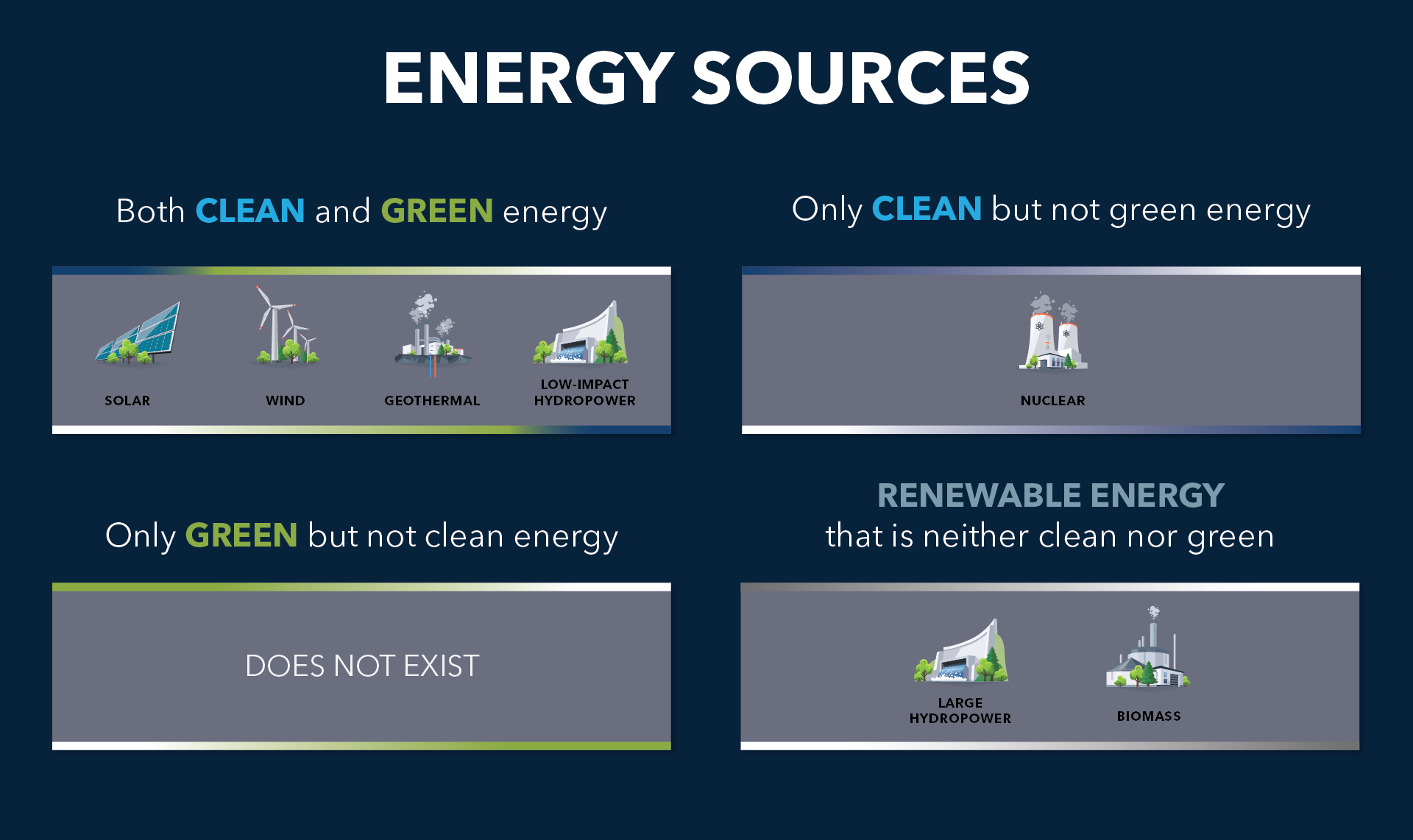
Both clean and green energy have the same end goals of reducing global greenhouse gas emissions and combating climate change, but did you know they are not the same thing?
Green Energy
According to the Cambridge Dictionary, green energy is defined as “Energy that can be produced in a way that protects the natural environment, for example by using wind, water, or the sun.”
Green energy is derived from sources that can be naturally replenished and they don’t produce pollution in the process (unlike fossil fuels). This means that not all sources used by the clean and renewable energy industry are, in fact, green. For example, power generation that burns organic material from sustainable forests may be renewable, but it’s not necessarily green, due to the CO2 produced by the burning process itself. Green energy sources also avoid mining or drilling operations that can be damaging to fragile ecosystems. Green energy is considered the most environmentally-friendly resource available to us today, with little to no ongoing environmental impact.
All green energy is also “clean” energy by definition, but the reverse is not always true.
Clean Energy
According to the Collins Dictionary, clean energy is “Energy, as electricity or nuclear power, that does not pollute the atmosphere when used, as opposed to coal and oil.”
Clean energy is created without emitting greenhouse gasses but has the potential to release minimal amounts of carbon dioxide and other chemical contaminants during production, possibly affecting the environment. Additionally, clean energy is not necessarily renewable. Clean energy possesses geographical limitations and offers sporadic production peaks depending on weather conditions (could highly benefit from a smart grid). When it comes to nuclear energy, safe storage and containment of radioactive waste is a largely-unsolved concern.
So, What’s What?
If energy is clean but not green, the generation of the energy does not produce greenhouse gasses or other pollutants. However, either the source is non-renewable and/or has negative effects on the environment during production.
Green energy is renewable, doesn’t emit greenhouse gasses, and doesn’t harm the environment. Clean energy only means zero greenhouse gas emissions (but may have a finite resource supply or harm the environment in production).

Solar, wind, geothermal, and low-impact hydropower are both green and clean energies because they are renewable; their generation does not produce greenhouse gas emissions nor does it harm the environment.
Both clean and green energy sources are sustainable energy options to replace fossil fuels. And because no single sustainable energy source can meet all of our needs, we need a combination of different energy sources to generate electricity, especially in regions with limited quality and availability.
Clean and green energy are an integral part of helping us overcome our current climate crisis and that is why it is important to know the difference between the two, rather than simply using the terms interchangeably.



